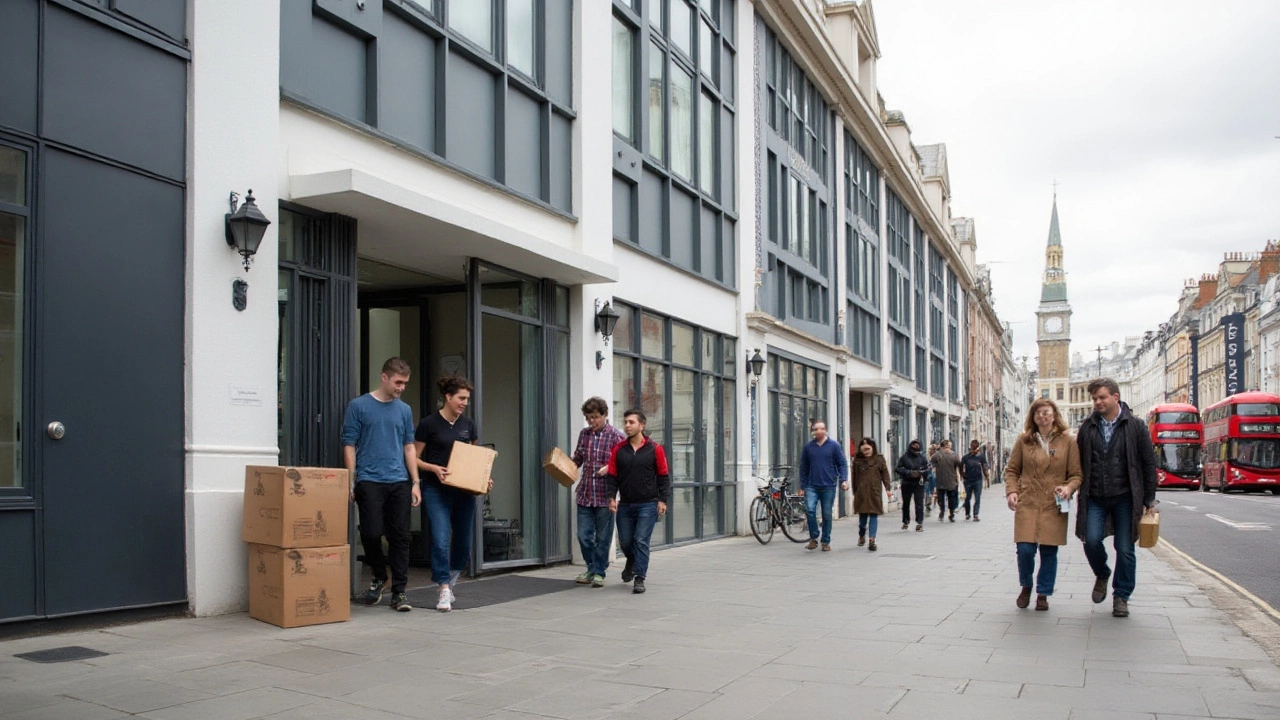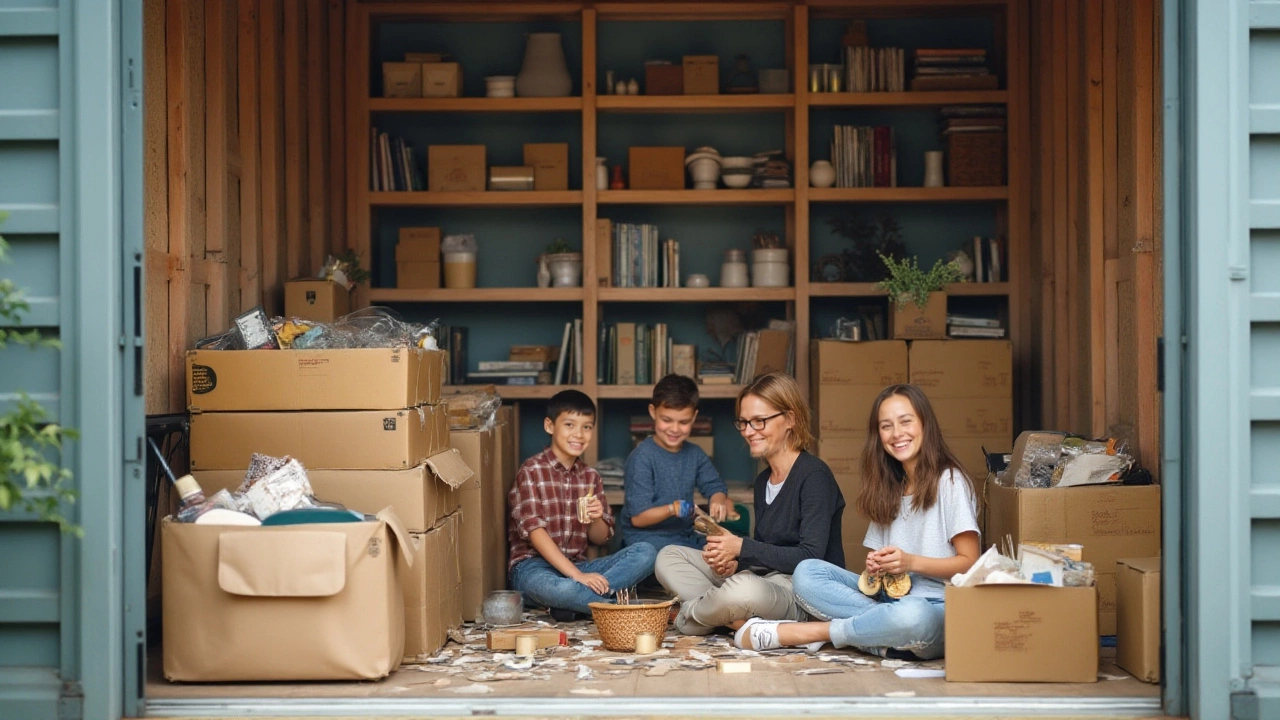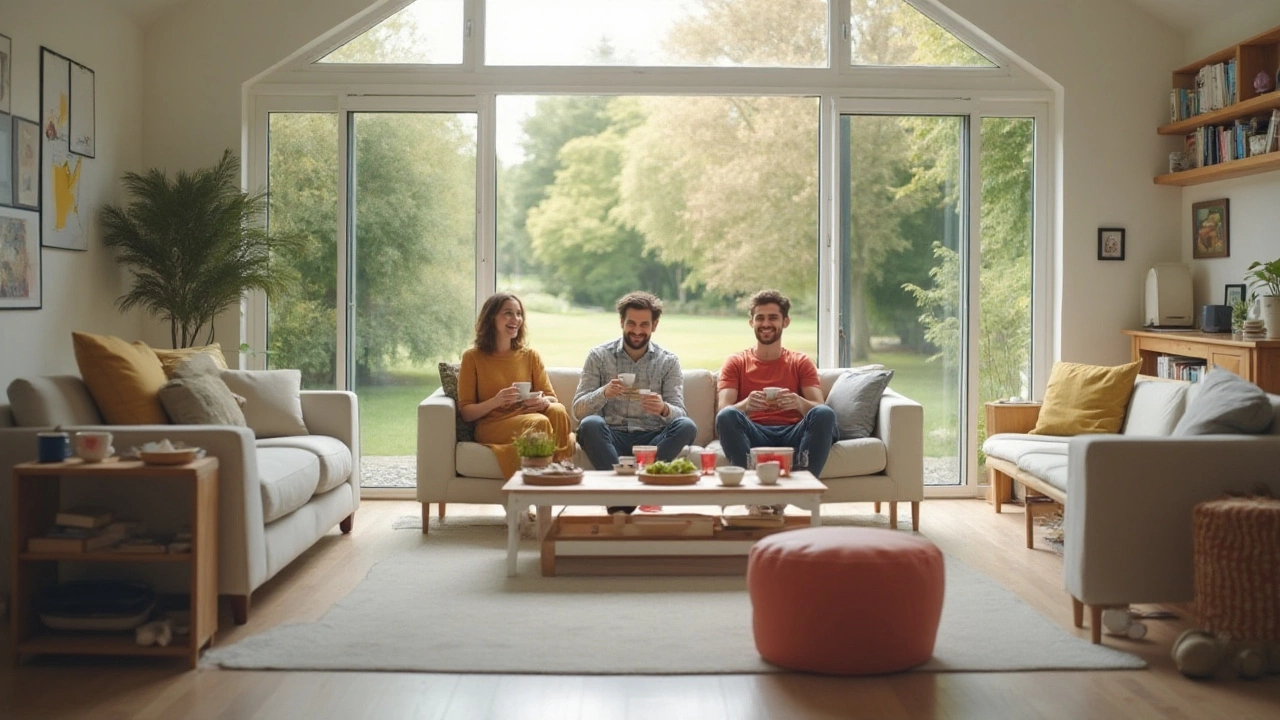Is It Worth Putting Your Belongings in Self-Storage Units?
 Jan, 28 2025
Jan, 28 2025
In our ever-shrinking living spaces, a question looms large: should we put some of our belongings into storage? Many people find themselves surrounded by items they rarely use but can't bear to part with. As clutter mounts, the prospect of renting a self-storage unit becomes enticing. But is it worth the investment?
To answer this, we need to assess our personal storage needs and understand the advantages that self-storage solutions can offer. These range from decluttering our homes to safeguarding valuable items. Of course, the costs and logistics involved require careful consideration, which we'll delve into, helping you determine if this path makes sense for you.
Exploring different storage options and employing smart strategies can maximize space and efficiency. But beyond the practical, there's an emotional element to storing belongings, too. Join us as we unpack the intricacies of self-storage, offering tips along the way to keep your sacred spaces serene and practical.
- Understanding Your Storage Needs
- Benefits of Using Self-Storage Units
- Cost Considerations and Budgeting
- Choosing the Right Storage Type
- Tips for Effective Storage Utilization
Understanding Your Storage Needs
Before embarking on the journey to rent a self-storage unit, it's essential to delve deeply into your individual storage necessities. The first step in this process is to take an inventory of the items you wish to store. Whether it's seasonal decorations, rarely used furniture, or memorabilia, cataloging what you own helps in visualizing the total volume. This exercise often reveals trends in personal accumulation, such as possessing multiples of items or forgotten collections. Such insight isn't just about creating space; it's an opportunity for mindful decluttering, prompting one to evaluate the true value each piece has in their life.
Recognizing the temporal nature of possessions is another crucial aspect. Some items are stored short-term, like sporting equipment during the off-season, while others take up space indefinitely for reasons like sentimental value. Identifying these durations can guide the choice of storage solutions. For instance, self-storage units may be ideal for long-term needs, but temporary storage might be better served by home reorganization. This path is filled with choices and sometimes compromises, as one balances emotional attachment and practicality.
Considering the size and type of storage units that fit your lifestyle forms the next logical step. Providers offer a variety of dimensions, from small lockers to garage-sized spaces. But size isn't the sole determinant. The type, whether climate-controlled or basic, can significantly affect the condition of belongings. A family heirloom might be better preserved in controlled conditions, whereas garden tools might not need such care. This decision-making process is simplified when needs are clearly defined from the outset.
There's an interesting aspect to how self-storage impacts our psychological well-being. A cluttered home can weigh on the mind, much like the material objects that fill it. Renting storage solutions not only liberates physical space but also mental space, often cited by psychologists as a step toward a healthier lifestyle. To echo Marie Kondo's sentiment: ‘Does it spark joy?’ Allowing yourself this question concurrently simplifies and enriches the decision-making process about what stays and what goes.
'The average home has tripled in size over the past 50 years, but with it, our appetite for stuff has grown exponentially,' notes the US Organization of Building Officials in their report on space utilization.By understanding our storage needs from multiple vantage points, we make informed decisions that align with both spatial and emotional well-being. This clarity often results in more focused interactions with belongings and a more organized life, particularly benefiting urban dwellers grappling with limited living spaces.
Assessing Available Options
Part of understanding your needs includes evaluating all available alternatives. Sometimes, the best solution doesn't even involve renting self-storage. Could a corner be reimagined as under-utilized, or a guest room double as storage? Many new furniture pieces come with built-in storage, offering clever solutions to everyday problems. Taking stock of your home’s non-traditional storage options can lead to creative and sustainable outcomes. This is not a journey exactly without challenges, but through careful consideration, it becomes increasingly rewarding. Paying keen attention to the little details can significantly impact your decision toward eventual harmony and efficient use of space.
Benefits of Using Self-Storage Units
Many find themselves at a crossroads where space in their home is rapidly dwindling, leading to the practical consideration of storage units as a feasible option. A significant benefit of self-storage is the ability to declutter our homes, which in turn enhances the living environment and often contributes to improved mental health. When we store items that are infrequently accessed, we free up space for daily essentials and activities, creating a more organized and efficient home. The act of decluttering can feel liberating, almost like shedding a weight that's been inadvertently burdening our personal spaces.
Self-storage solutions also offer incredible flexibility and security for those with valuable possessions. Rather than leaving antiques, heirlooms, or other high-value items in potentially precarious conditions at home, a storage unit offers climate control, insurance options, and security systems such as surveillance cameras. These features ensure that belongings are not only kept safe but also maintained in excellent condition.
“Self-storage has become a natural extension of people's households in modern society, providing a secure space for items people are not ready to relinquish.” – Modern Storage Quarterly
For those experiencing life transitions—such as moving, downsizing, or merging households—self-storage acts as an invaluable buffer. It offers a temporary yet reliable solution to store possessions during times of instability or change. With access to one's stored possessions at any time, there is peace of mind knowing items are just a short drive away.
Self-storage units offer various sizes and types tailored to specific needs, including units that cater to specific storage conditions for sensitive items. This versatility is one reason why self-storage has thrived as a solution for both individuals and businesses. Businesses, especially those with fluctuating inventory or seasonal gear, benefit immensely from having the extra space without committing to larger, permanent facilities. This approach can significantly optimize business operations by reducing clutter and enhancing the efficiency of inventory management.
Even artists and hobbyists find refuge in self-storage, where equipment, materials, and creations are securely kept without invading precious living areas at home. It facilitates creativity and passion projects by allowing individuals the mental and physical space needed to focus on their endeavors without the mounting concern of clutter.
| Advantages | Description |
|---|---|
| Flexibility | Units can be updated or swapped as needs change. |
| Security | Features such as surveillance provide peace of mind. |
| Cost-Effective | Eliminates the need for larger housing just for storage space. |

Cost Considerations and Budgeting
When thinking about self-storage, a primary concern is the financial implications. The cost of renting a storage unit can vary widely depending on factors such as location, unit size, and additional services like climate control. Recognizing these variables is crucial for anyone keen on ensuring this investment aligns with their budget. For urban dwellers, rental rates in city centers tend to be higher due to demand and space constraints, while suburban options might offer more competitive pricing. However, one must weigh these against travel convenience and accessibility.
Renting a self-storage unit requires a keen eye for detail and a strategic approach to budgeting. Begin by calculating initial costs like deposits and potential administrative fees. Then, weigh these against ongoing monthly rent. Make sure to account for any potential incremental costs that might sneak into your contract, such as access fees or late charges. Additionally, some facilities offer promotions, like the first month free or discounted rates for long-term commitments—though enticing, these offers should not overshadow a thorough cost-benefit analysis. Keeping track of these expenses can help avoid any nasty surprises down the road.
To maximize value, compare different facilities. Pay attention not just to price, but to factors like security features and accessibility. A reliable facility with advanced security might be worth the extra cost if you're storing valuables. Always read customer reviews and perhaps visit a few units to get a feel for the place. A good rule of thumb is to consider annual expenses instead of monthly costs. This overview helps avoid compartmentalizing expenses and aids in establishing whether storing your belongings is feasible or should be reconsidered. As financial expert Jane Doe once said,
"Aligning storage costs with your overall budget plan ensures that you're not spending more than the worth of the items stored."
For those juggling multiple financial responsibilities, organizing a dedicated fund or using a budgeting app to track storage expenses could be beneficial. Doing so enables a better overview of one's expenditures, hinting at the value derived from using such storage solutions. Keep the dialogue transparent within household budgets; this is vital for ensuring everyone involved understands and agrees on the future of stored items and the money allocated towards it. Reviewing and adjusting this budget periodically can also further ensure you're always aligned with fluctuating pricing or new storage requirements.
Additional Expenses and Hidden Costs
Beyond the basic rental fees, there might be ancillary charges associated with maintaining a storage unit. Insurance is often overlooked but critical, as most units don't cover damage or loss of items stored. Some facilities provide insurance, though often at an additional fee. Alternatively, homeowners or renters insurance may extend to items in storage, but you must check with your provider to confirm this coverage. Discussing your policy options and understanding premiums can be valuable in safeguarding your belongings affordably.
Transportation costs present another potential expense, especially if trips to the facility are required frequently. Factoring in fuel costs, or hiring movers, can add up quickly, necessitating careful consideration. Moreover, if you’re storing climate-sensitive items, you might opt for climate-controlled spaces that come with their own premium. Weighing these extras becomes imperative to make sure they’re justified by the value they provide. Consider keeping an eye on promotional rates, season-based contracts, or bundles offered by storage companies, which could offset some of these additional expenses while still delivering peace of mind.
Choosing the Right Storage Type
Finding the perfect self-storage solution involves more than just picking the nearest facility. You need to match the type of storage to your specific needs. The range of options can seem overwhelming at first glance: from traditional storage units to climate-controlled ones, each serving different purposes. What you choose should depend on the nature and quantity of the items you're storing. A traditional storage unit suffices for furniture and seasonal decoration, but if you have delicate documents or electronics, the extra cost of climate-controlled units can offer peace of mind, preventing damage from humidity and temperature shifts.
To elaborate on these choices, let's consider the three primary types of storage services: indoor, outdoor, and mobile. Indoor units are generally secure, adding an extra layer of protection against weather conditions and theft. On the other hand, outdoor units offer convenience, particularly if you frequently retrieve or add to your stored items. Meanwhile, mobile storage is increasingly popular, allowing units to be delivered to your doorstep; you pack them, and the company then transports them to their facility. Each option has unique advantages and drawbacks, impacting access convenience, cost-effectiveness, and security.
According to the Self Storage Association, consumers often prefer facilities with good insurance and security processes. A robust security network gives peace of mind knowing your stored items remain safe from vandalism or theft. However, before signing lease agreements, compare policies and fees at different facilities. Make sure you ask about access hours—24/7 might be necessary for business stock, but not essential for personal goods. When picking what's best for you, don't just focus on the price. Weigh the benefits of proximity and flexibility against added frills like climate control and favored access times. As Catherine Graham from Smart Item Solutions said,
"The right choice is a balance of convenience, cost, and care for your belongings—the power of peace of mind is worth the price."
As you narrow down options, also look for user reviews and recommendations. Facilities that receive praise for customer service and transparency about rental terms often provide a better user experience. Practical questions include electricity availability and pest control. A quality storage unit considers these factors, ensuring items remain in their stored condition. Some people might prefer facilities that allow online management and automated payment records—an ideal modern convenience. Finally, comparing several options with a checklist can be wise, allowing you to prioritize crucial elements such as location, price, services offered, and security measures. No two storage solutions are created equal, and your priorities should guide your choice.

Tips for Effective Storage Utilization
Entering the world of self-storage can feel daunting. It's a vast landscape, and it demands a thoughtful approach to ensure you're making the most of the space. The key is to start with a concise plan and a thorough understanding of your storage needs. Taking the time to categorize your belongings not only helps in organizing them but also in deciding what truly necessitates storage. This process involves evaluating the sentimental and monetary value of each item, along with how often you use them in your daily life.
An essential step is to employ effective labeling systems. Imagine the frustration of needing a specific item and having to sift through piles of unmarked boxes. Proper labeling saves not just time but your mental energy too. Consider labeling boxes with both contents and a numbering system, with an index that you keep on your phone or computer. Many successful people, like professional organizers, advocate for digital inventories. This method helps you keep track of your items without upending everything stored.
Organizing your storage unit also requires strategic placement of your boxes and possessions. Place items you might need access to frequently closer to the entrance. Store seasonal items, such as winter clothing or holiday decorations, in the back since they're typically used once a year. As you stack boxes, consider the weight and fragility of contents. Putting heavier boxes at the bottom builds a solid foundation, while more delicate items should always rest on top.
Consider incorporating shelving units within the storage unit. Shelves allow for efficient use of vertical space, keeping items organized and easily accessible. Investing in clear plastic bins can also help in rapid identification of stored items without rummaging through layers of cardboard boxes. This transparency is not just practical but a boon for visual processors who may struggle with hidden contents. Marie Kondo, a renowned tidiness expert, once emphasized, "The objective of cleaning is not just to clean, but to feel happiness living within that environment." Her wisdom applies to self-storage as well, wherein order brings peace of mind.
Additionally, gaining knowledge about climate considerations can greatly impact the longevity of your belongings. Depending on your needs, you might opt for climate-controlled units that protect sensitive items from extreme temperatures and humidity. Fabrics, wood, electronics, and important documents can greatly benefit from a controlled environment, preventing mold, warping, and other damage. Ask around for local weather patterns if you're unsure; climate impacts storage more than some might anticipate.
Lastly, don't forget to leverage the community for advice and tips. Many storage facilities host forums or hold events for their clients, where experienced renters share their hard-earned strategies. Pay attention to reviews of storage units online, where common pitfalls and best practices are shared generously by tenants. If you're lucky, you might stumble upon a golden piece of advice that changes your storage game entirely.